PC components explained: how to create the best computer components list
Don't know anything about PC components? Here's everything you need to know about the parts needed to build a PC, including what it will cost you
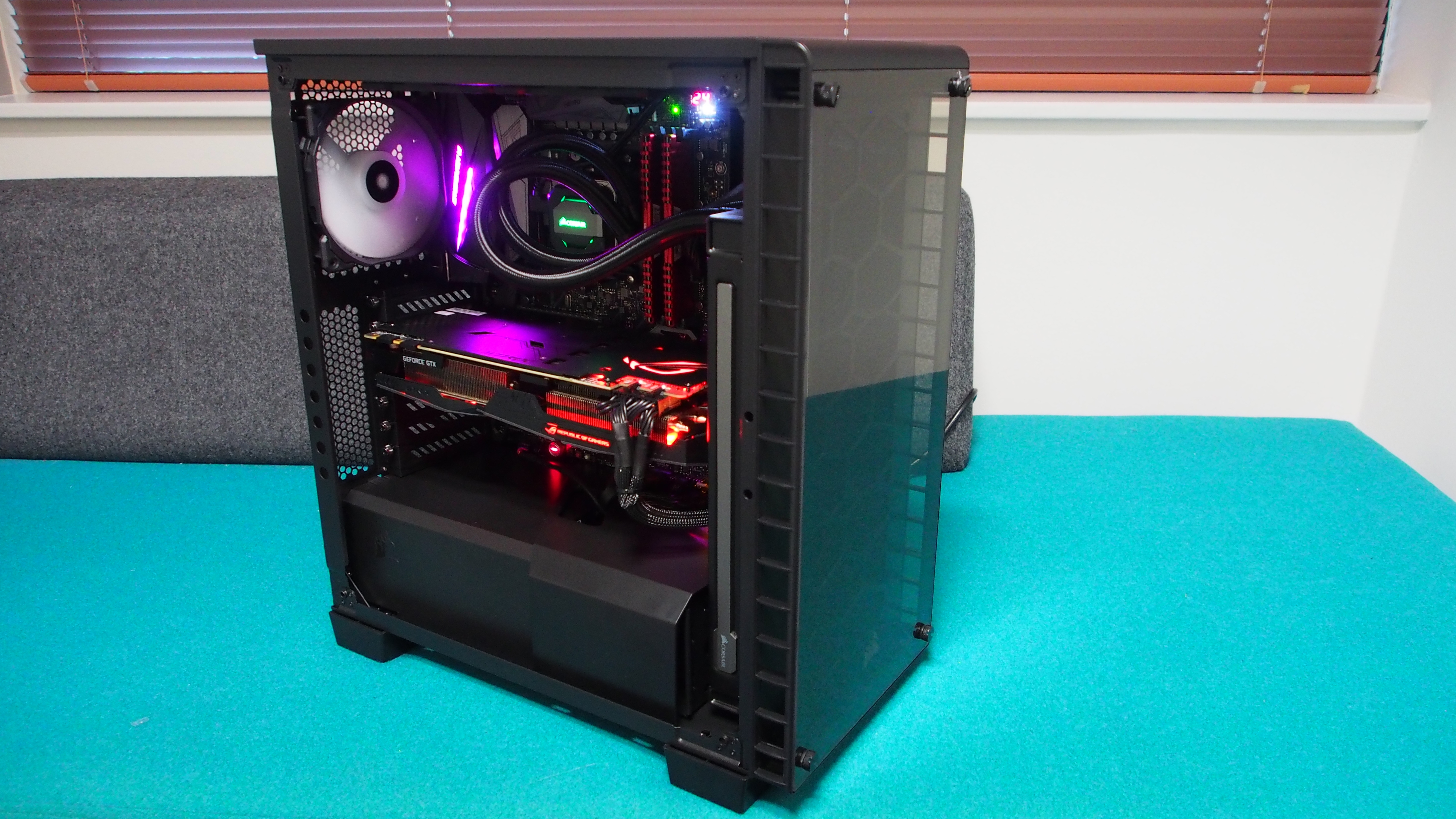
If you're looking to build your own PC, it's likely that you're thinking about making sure you've got the best PC components to get the job done. While the sheer number of options can make choosing feel more than a little overwhelming, this guide is here to help make that job a whole lot easier.
There's no doubt about it, learning how to build a PC is not for the faint of heart. It's a job that will really test your patience and endurance and there's likely to be times when you just want to throw in the towel, head to your local home electronics retailer and splash out on the best computer that money can buy. But, we guarantee that all that hard work of building your own is going to be well worth it when you feel the satisfaction of sitting back and looking at the finished product.
When it comes to PC components, there are a lot of parts that you're going to need. From the best graphics card to the best motherboard and everything in between, there's a lot to consider and the products you end up selecting will largely depend on the budget you've allocated to this project.
The good news is that we're here to help you score amazing deals on all the PC components you're going to need to get the job done. Having a good idea of what you want can make your PC building experience so much better. And, with this guide, we can help you get your planning and research started, and find the best PC components at a reasonable price. This way, you can get your rig up and running without the added stress.
From the best RAM to the best hard drives and every other part you'll need to create the PC of your dreams, here's our run down of what PC components to shop for and how to do it all without breaking the bank.
The budget
Forget what anyone tells you, every build should start with two key things. A budget, and ambition. The budget is obvious, how much cash are you willing to drop on your shiny new rig. And ambition? Well that’s finding out exactly what you want to do with your brand new machine.
It might sound crazy, but a dollar value of a system that costs 700 bucks is far higher than the value you can extract from a $4,000 monster. The lower the budget, the more you’ll have to stretch every dollar to acquire multiple PC components. However, seasonal sales can make budgets easier to adhere to.
Sign up for breaking news, reviews, opinion, top tech deals, and more.
We would advise that you set out to build a gaming PC that adheres to a single goal. Do you want one of the best gaming PCs? Or, would you rather have a home theater PC that can seamlessly blend into your living room? Do you want to edit video in 4K? All of these require different PC components to maximize savings and performance.
Even though most PCs should be able to handle basically any task, it’s better to focus on the PC components you really need. Because, with the best computers, you don’t want a jack of all trades and a master of none.
Once you know exactly what you want to do with your new PC build, and you know what your budget looks like, you need to decide on your form factor, and whether to go with Intel or AMD. And, once that’s all out of the way, you’re ready to build.

Process this
We don’t call the CPU a central-processing unit for nothing, it’s literally the most essential part of any PC build and for that reason we’re starting here. Choosing the best processor starts with deciding between AMD or Intel as they’re the prevailing chipmakers in this category.
From there, it’s a matter of picking the right part for your budget. AMD Athlon as well as Intel Pentium and Celeron are affordable and best suited for basic computing tasks, media playback and simple lifestyle applications. Meanwhile, Intel Core and AMD Ryzen serve the widest gamut of users looking to build anything from a cheap HTPC to an enthusiast gaming PC. Lastly on the high-end tier, there are the Intel Core X and AMD Ryzen Threadripper for more intense workloads like video production, 3D modeling and streaming gamers.
Intel Core i5 processors have traditionally been the go-to chip for gaming PCs. This is because most mainstream games (outside of the odd strategy title) are more graphically intensive than CPU intensive, so you don’t need the most baller silicon. However, this has been slowly changing over the last few years, with titles like Battlefield V leveraging the multithreaded performance of higher-end processors. Still, you should be fine in most games with something like the Intel Core i5-9400, as it’ll keep up with most games.
And of course, because AMD is finally back in action, we absolutely recommend the AMD Ryzen 5 2600X as well. Both Intel’s i5-8400 and AMD’s Ryzen 5 2600X pack a phenomenal punch when it comes to gaming. Intel slightly edges out on in-game frame rates single-core performance, while AMD swings back in computational tasks, and more demanding workloads.
So what do we mean by that? Basically, the Ryzen 5 2600X packs multi-threading, meaning six cores and 12 threads of unadulterated Ryzen fury, and a whole ton of spare processing power for any and all applications you’re running on the side, making it perfect for streaming.
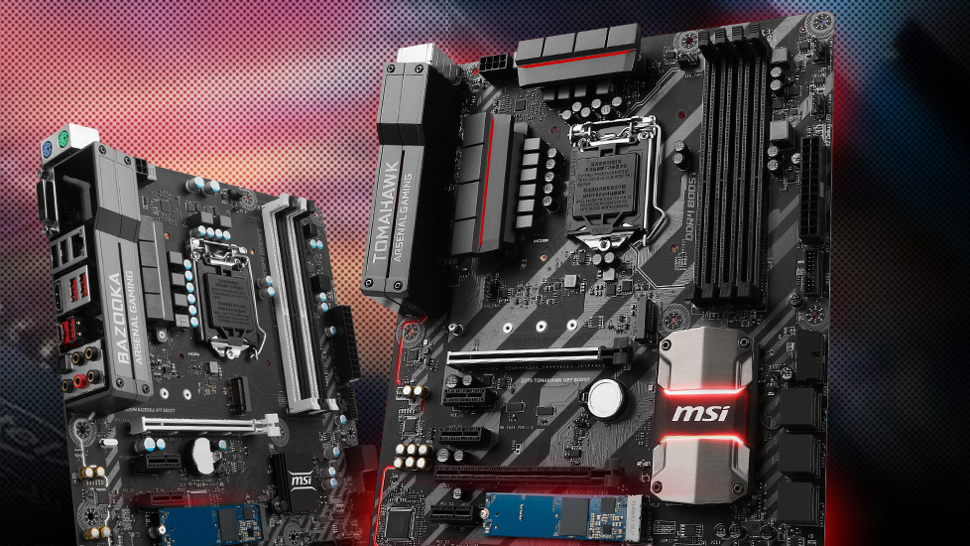
The mother of all boards
No good CPU goes without a good motherboard. Depending on what chip you choose, you’ll be locked into a selection of mobos with a variety of different chipsets available to you. But the first question we’ll help you answer is, what size motherboard is right for you?
ATX, E-ATX and XL-ATX boards are geared towards vast storage solutions, and hefty graphics card setups. And if you’re after a smaller system, Micro-ATX or Mini-ITX is your jam, providing a more compact size – though at the cost of fewer slots for graphics cards and other PCIe add-in cards.
From there your choice of processor will also determine, which motherboard will work with your system. This includes ensuring the CPU sockets lineup as well as having the right chipset. For example, Intel Coffee Lake and Kaby Lake chips technically plop down on the same LGA1151, but the former requires a 300-series chipset while the latter was launched with the 200-series chipset. Similarly, Ryzen and Ryzen 2nd Generation both share the same AM4 socket, but the latest AMD chips see the most benefit from the latest X470 platform.
Depending on the size of your chassis and if you’ve gone with an Intel processor, this ASRock Fatal1ty Z370 Gaming K6 (for ATX), Asus Z370-G (for Micro-ATX), or Asus ROG Strix Z370-I Gaming (Mini-ITX) all fit the bill perfect for a modern Intel-powered PC.
For our AMD builders, we’d recommend the Aorus X470 Gaming 7 Wi-Fi for an ATX build, the MSI B350M Mortar (a real fine budget board), for Micro-ATX rigs, and the ASUS ROG Strix X470-I Gaming for the mini-ITX lovers out there.
Ultimately, whether you go with our suggestions or not, it’s always worth remembering that your choice of motherboard will ultimately dictate your feature-set, memory and storage, your case, and how well your chip will overclock (if you invest in an unlocked part).
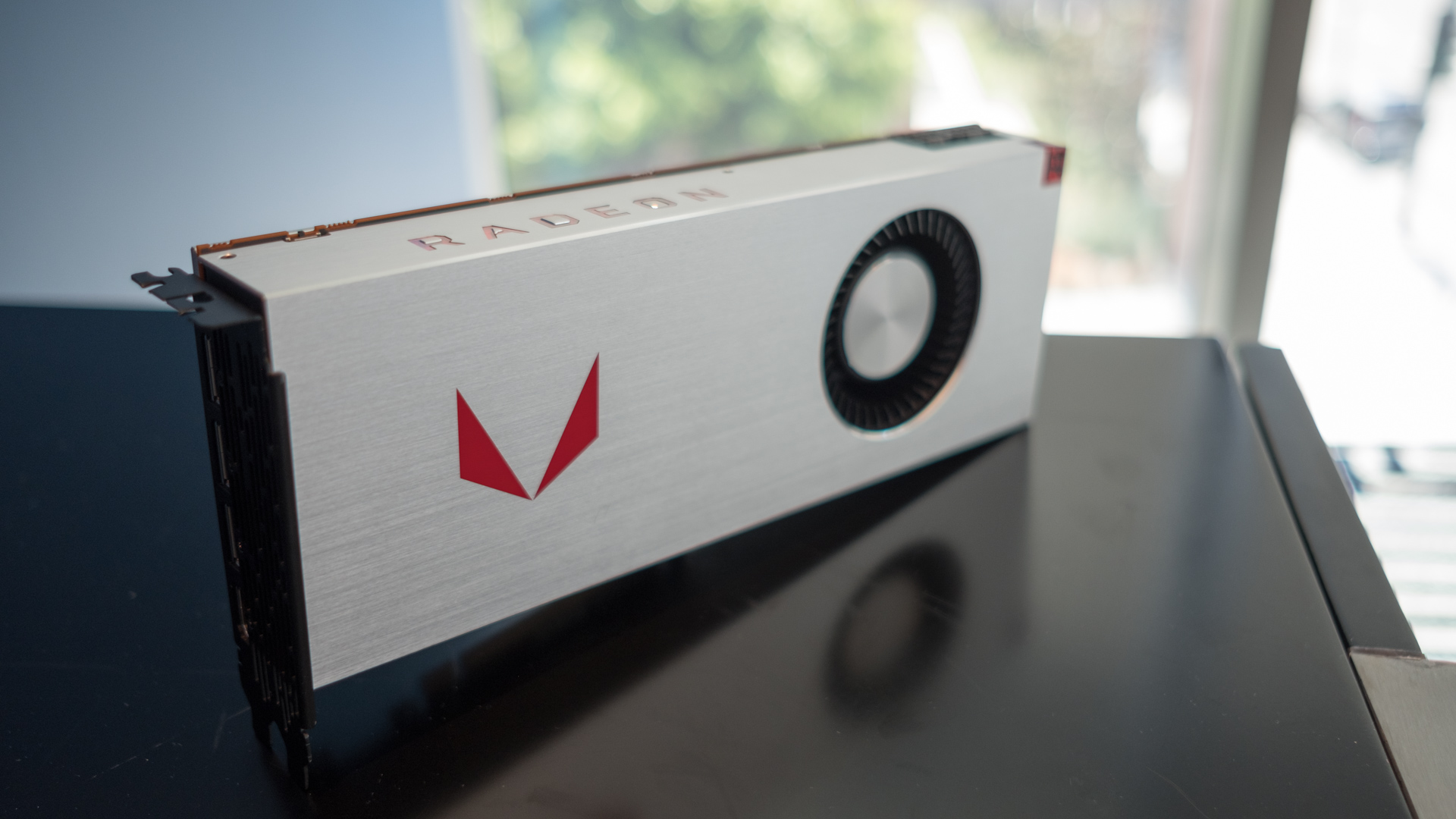
Graphics cards
Finishing out the trinity of every PC builds’ main components, graphics cards determines what your desktop will be able to visually render. While PCs can get away with just integrated graphics for simple tasks and even 4K streaming, creating your own media and gaming box requires the discrete graphical power that only an dedicated GPU can offer.
If you just want to play games at 1080p, you might want to take a look at the Nvidia GeForce GTX 1660 Ti, or the Nvidia GeForce GTX 1660. Either of these cards will be a safe “bang for the buck” option, and they’ll easily hit 60fps in most AAA games at 1080p. Both of these cards should last you for at least the next 2 years.
There are alternatives out there, AMD’s Radeon RX Vega 64, Vega 54 and RX 580(if you can find them), are fantastic combatants to this card, but they just can’t keep up on a pricing level.
However, if you really want to go all-out and do some high-end 4K gaming, you’re going to want to drop some stacks on the Nvidia GeForce RTX 2080 or the RTX 2080 Ti – though AMD fans might want to go with the Radeon VII. Now, these are expensive cards, but if you want no-holds-barred 4K gaming that’ll make the PS4 Pro look like a cheap toy, you’re going to want the 11GB of GDDR6 VRAM and 4,352 CUDA cores only the 2080 Ti can offer.
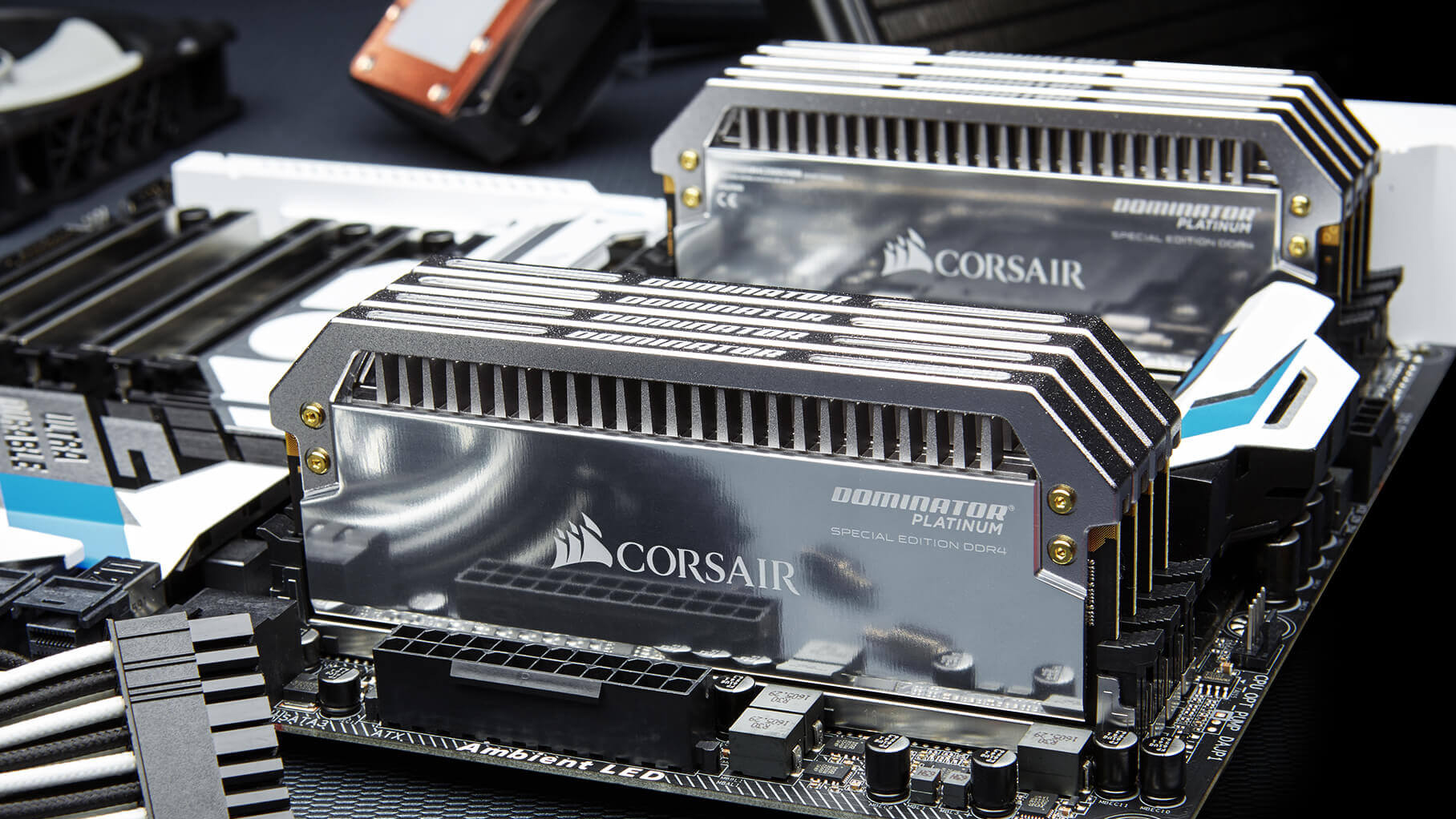
Memory
Exactly what is RAM? Memory or RAM (random-access memory) is practically the lifeblood of any PC and you’ll need an ample amount of it for a healthy running machine. Similar to your short term memory, RAM holds bursts of information for a limited time to quickly complete tasks, so literally all of your data will pass through this component of your PC.
With this in mind we’ve typically always favored capacity over speed when it comes to performance. After all, nothing says ‘killer rig’ like having 38 Google Chrome Tabs open, plus Discord, and a game of your choice all at the same time.
The Corsair Vengeance LED, HyperX Fury, and G.Skill Rampage V are all memory kits of choice that mix together a blend of affordability, speed and reliability. 16GB (2x8GB) of dual channel DDR4 running at 3200 MHz is ideal for gaming at 1080p for now, and should future-proof you for the next 3 to 4 years at least.
For very basic gaming and web browsing 8GB is enough, but as a whole we recommend 16GB as the go-to for any build today. For video and photo editing, the more memory you have, the better.
It’s worth noting in regard to speed, that Intel CPUs typically doesn’t benefit from faster memory in day-to-day tasks, however Ryzen can see anywhere from a 10-15% performance increase, purely from utilizing faster memory. Ultimately anything close to or above 2,500MHz is golden – though you’ll find some modern RAM approaching close to 5,000MHz.
Keep in mind, motherboards don’t support unlimited memory speeds, so check the specification before buying incredibly fast memory. For example it would be a waste to get 4,000MHz speed RAM and find out it could only reach up to 3,000MHz because of the motherboard’s limitations.

Storage
If RAM is like short term memory, storage is essentially your computer’s long term memory. This is where all your data is stored, whether its a document, picture, movie, game saves, programs and even the operating system.
Likewise, storage comes in a myriad of forms and rated speeds. Hard drives are fantastic for holding a ton of data at a very low cost. Meanwhile, the best SSDs can be exponentially faster, but opting for massive capacities will cost you a lot.
Thankfully, SATA SSDs have become old hat at this point that an average Joe can find drives with one or more terabytes of capacity for little more than a much slower hard drive would cost. They’re all you need for a quick nippy system and we wholeheartedly recommend the Samsung 860 Evo. Install your OS on here, and some choice games and watch your load times and general user experience fly away.
NVMe drives are also all the rage as they can offer five-to-six times faster data transfer speeds and there are even some affordable options in the market now. The Adata XPG SX8200 is a fantastically affordable and quick drive. If you want to just jump into the top-shelf stuff, the Samsung 970 Evo and WD Black NVMe SSD are among the fastest drives you’ll encounter today.
For added oomf, we recommend picking up a 1TB old school HDD as well if you can. Western Digital’s Blue drives are usually a great place to start, and you can pick those up with a great deal most of the time.
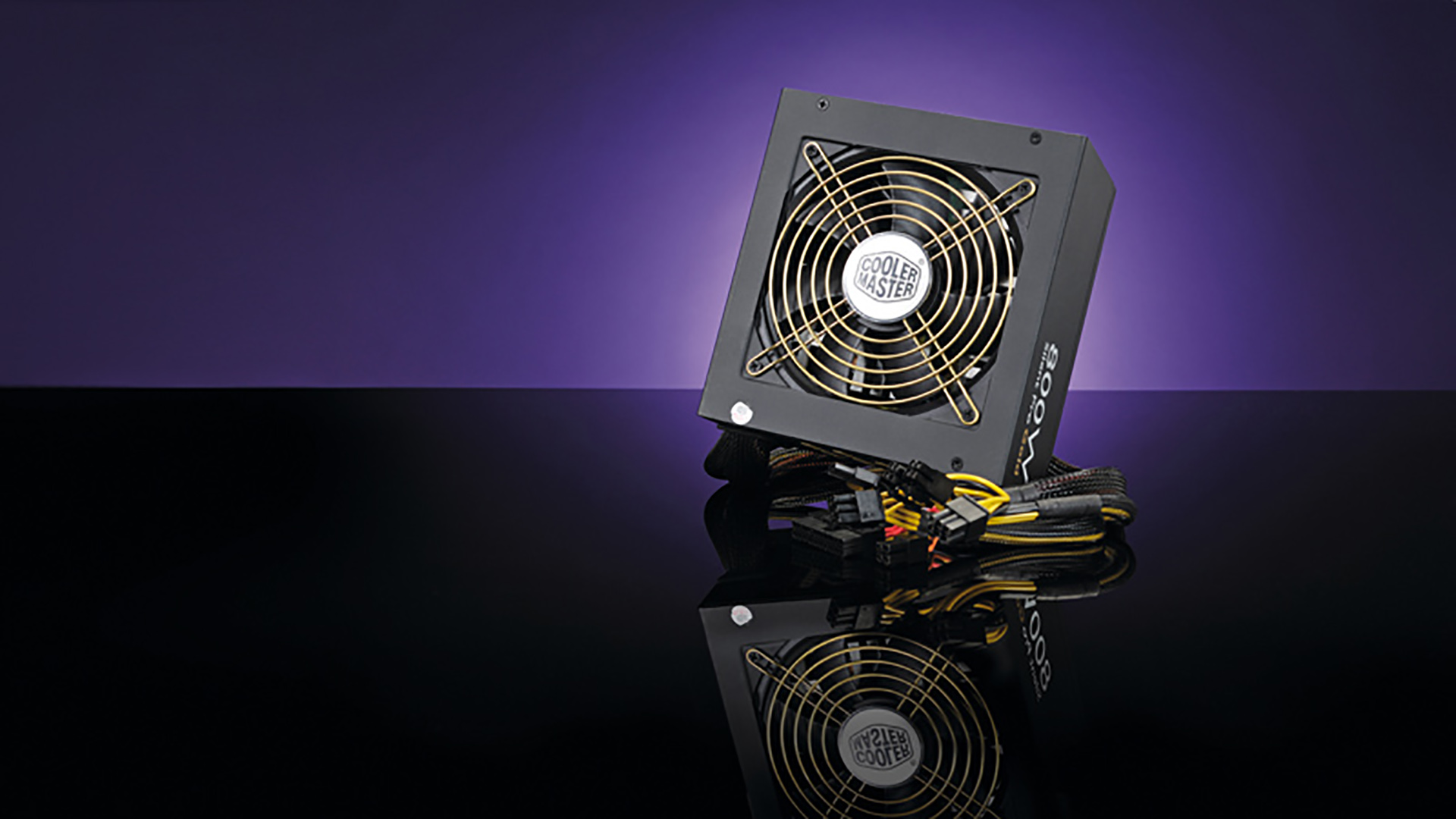
Power supply
Investing in the best PC power supply is the most crucial part of your PC build as it’s responsible for supplying power to run any and all of the other components in your computer. Without this crucial foundation, your PC will fail to even start and a system built on shaky ground is also doomed for failure.
In the real world it’s unlikely you’ll ever need more than a 650W for a single GPU build like we recommend here. When shopping for a PSU it’s advisable to get one with 20% more capacity than you’ll need: 10% for overclocking, and another 10% so you’re not running your PSU ragged at all times. The higher the efficiency rating (from good to best; bronze, silver, gold, platinum, titanium), the less electricity you’ll waste as heat.
If you’re ever unsure how much juice you’ll need, head over to PCPartPicker, enter your spec, and take a look at the top of the page to see just how many watts the system will draw from the wall.
Don’t skimp here. When a cheap PSU blows, it can take your whole system with it.

The PC case you choose shouldn’t just be pretty; it should be as tool-less as possible, offer tons of cable routing options and ample room equal to your PC building ambitions. As far as chassis choice, it all starts with what motherboard you’re using for your build. We’re not talking manufacturer, but size. Make sure you pick up a case with good airflow, and one that’s the correct size for your new system.
You can always scrimp here, but the more money you spend, typically the more enjoyable your build experience will be. Not to mention, you’ll be looking at this PC case everyday, so you might want to make sure it’s a looker.
Our current favourite is the NZXT Hx00i-series, as they come in a variety of sizes while all featuring exceptional airflow, a tempered glass side panel, integrated RGB lighting, and a fan controller.

CPU coolers
You’re going to need one of the best CPU coolers to chill either the Ryzen or the Intel chip of your choosing. CPU coolers split into two main types: air-coolers and liquid-coolers.
Air coolers as you might have guessed use air to push heat through an array of heat pipes and fins called a heatsink. These types of CPU coolers are generally affordable and easy to install, but can sometimes interfere with the installation of memory with tall heat spreaders or oversized graphics cards.
Liquid-coolers on the other hand are a bit more complicated as they use a closed loop of coolant to keep processors chilled. These are often more efficient and can keep your CPU running at lower temperatures than an air cooler. The only downside is these liquid-cooling units can be more expensive and intimidating to install at first.
Thanks to the advancements in technology and an obsessive pursuit of dead-silence, there are also a few passive coolers that are nothing more than cleverly engineered heatsinks.
Regardless of which type of CPU cooler you get, you’ll want to make sure the product you choose is compatible with your system. If you’re going Intel, you’ll need the standard the LGA 1151 socket that supports most mainstream Core processors. If you’re going with AMD, the AM4 socket is what you should look out for.
Always make sure your cooler is compatible with your case, and the socket and processor that you’ll be mounting it to. Luckily, most coolers come with an assortment of accessories that make them compatible with either platform and even more.
The next step
Hopefully we’ve helped you create a complete list of components ready enough to construct a complete PC. The next step is building the actual PC and while it can be tricky, we’ve also created a complete step-by-step guide on how to build a PC to ease you through the process.

Zak is one of TechRadar's multi-faceted freelance tech journalists. He's written for an absolute plethora of tech publications over the years and has worked for Techradar on and off since 2015. Most famously, Zak led Maximum PC as its Editor-in-Chief from 2020 through to the end of 2021, having worked his way up from Staff Writer. Zak currently writes for Maximum PC, TechRadar, PCGamesN, and Trusted Reviews. He also had a stint working as Corsair's Public Relations Specialist in the UK, which has given him a particularly good insight into the inner workings of larger companies in the industry. He left in 2023, coming back to journalism once more. When he's not building PCs, reviewing hardware, or gaming, you can often find Zak working at his local coffee shop as First Barista, or out in the Wye Valley shooting American Flat Bows.